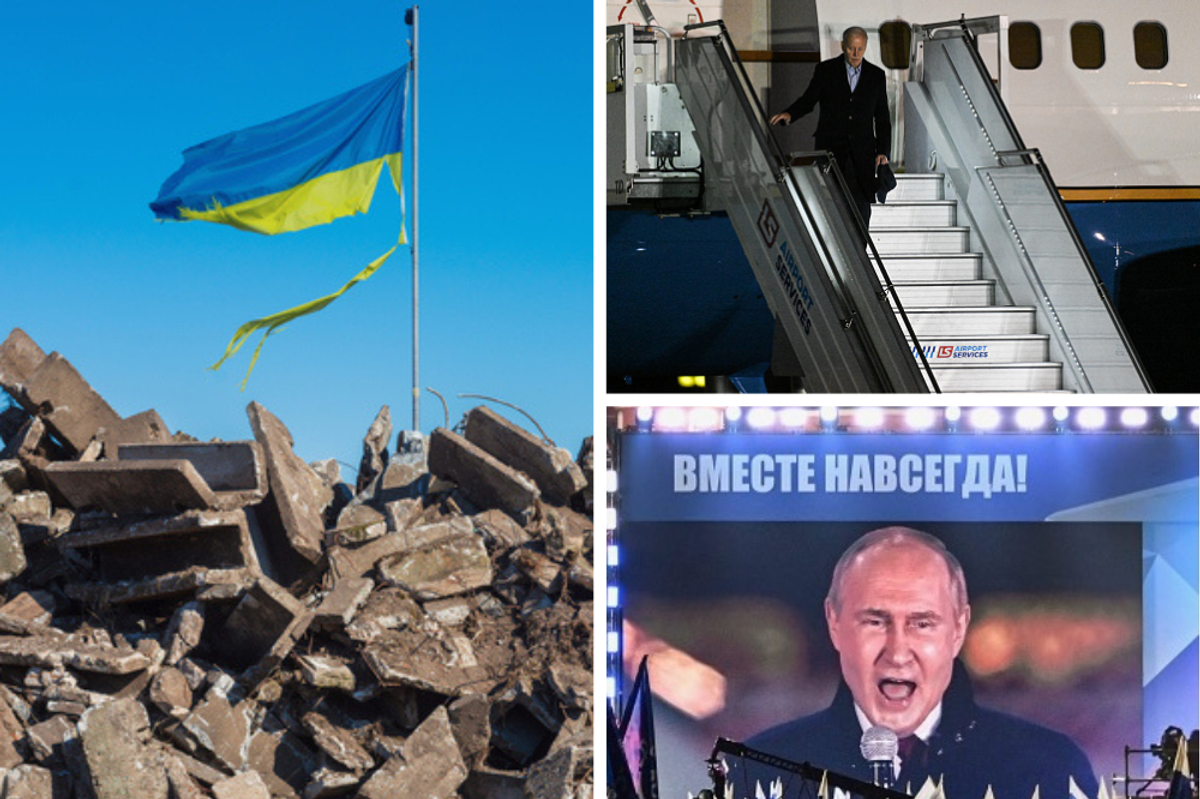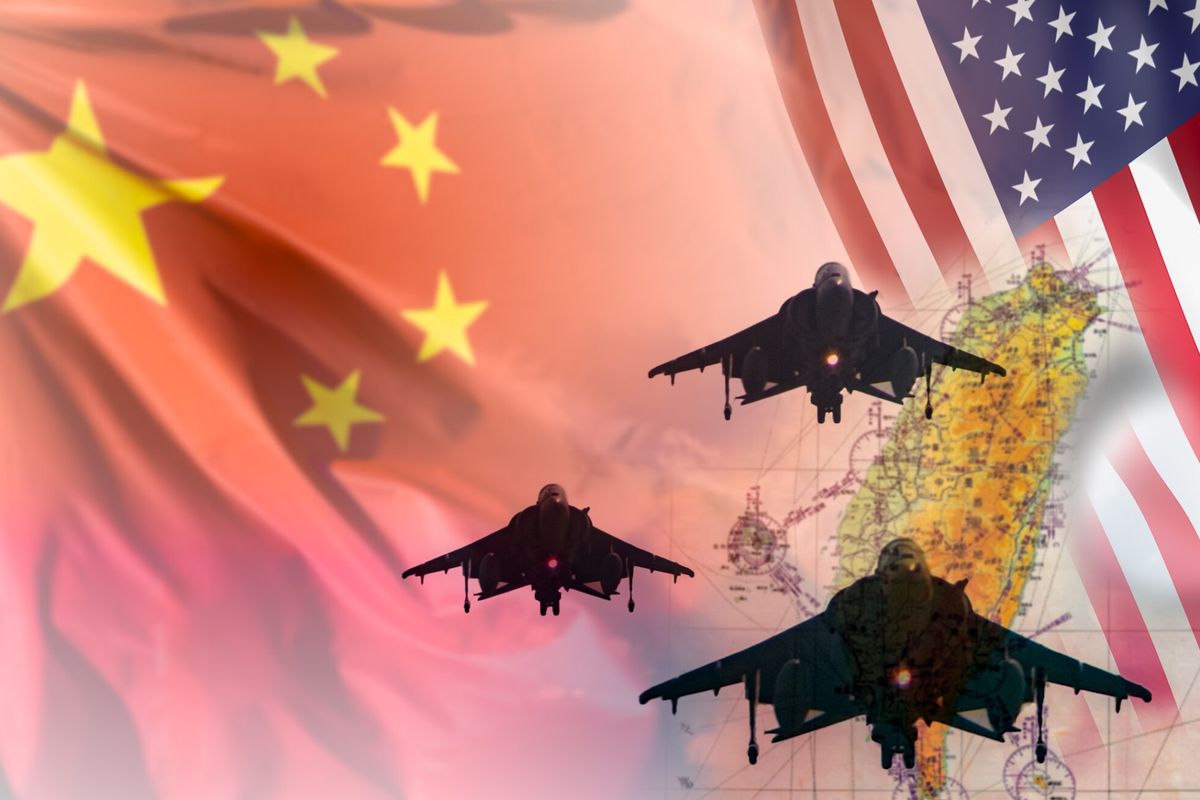President-elect Donald Trump consistently lambasted the North American Free Trade Association (NAFTA) as a "the worst deal, possibly in history," one which unfairly disadvantages American workers. He has promised to renegotiate the agreement, or possibly even get rid of it altogether. However, critics contend that the effect of degrading trade relations with Washington's two largest trading partners could be devastating. Others point out that the legal basis for backing out of the deal is shaky at best. The Cipher Brief spoke with former Senior Economist of International Trade and Investment in the White House Council of Economic Advisors and Senior Fellow at the Peterson Institute for International Economics, Chad Bown.
The Cipher Brief: Assuming that President-elect Trump’s previous statements on NAFTA represent his planned policy, what can we expect his administration to do to undermine the agreement?
Chad Bown: President-elect Trump has the legal authority under the NAFTA agreement to pull the United States out by giving six months notice to Mexico and Canada. There is a provision in the agreement that allows for this to happen. No one has ever done it before, so we’re not quite sure what the actual procedural steps would be or even whether that is Trump’s true intention. He could actually just want to renegotiate the agreement, and if that’s the case, then the question becomes what he will look to negotiate for, what might a final deal for a renegotiated NAFTA look like?
Trade agreements do require the country’s agreement. You can’t force another country to enter into a trade agreement with you; the terms have to be acceptable to the trading partner as well. International rules also go beyond just two countries wanting to sign a trade agreement together. They have to live up to basic international standards as well under the World Trade Organization (WTO), which does impose some kind of legal constraints or norms on what we might expect to see a new, renegotiated NAFTA look like. All that being said, what is President-elect Trump most worried about? In the campaign, he focused on what a bad deal NAFTA was for the American worker. So the question from that perspective is, how might NAFTA be renegotiated to address the concerns of those workers and their interests?
The way to help out those workers through a trade agreement would be to make one thing happen, which is to essentially raise the costs of say Mexican-produced goods entering the United States market, which would then make it relatively more attractive for a business to set up operations in the American market. There are essentially two ways to do that. First, you could raise the prices on the imported products coming into the country by imposing a higher import tariff, but this is not typically how trade agreements work. You don’t see special trade agreements where countries raise tariffs against each other, or one country has higher tariffs than the other. That’s not what free trade agreements are about. We haven’t observed that kind of a deal being struck anywhere out there in the world, so I think that’s unlikely to happen.
If that’s not going to happen, the only other alternative is to try to raise the costs of production in Mexico such that a company deciding whether to produce in Mexico or the United States faces relatively higher costs in Mexico.
How do you raise costs in Mexico? One thing you might do is encourage the Mexican government to increase their regulatory standards, both on the labor side and on the environmental side. The way you increase labor standards is to allow worker protection rights, such as allowing workers to unionize, requiring that companies meet health and safety standards, and preventing things like discrimination. If you make workers in Mexico more expensive by demanding that Mexico adopt these higher labor standards or similar provisions on environmental standards, that might push companies to move operations to the U.S. That’s an alternative way to renegotiate NAFTA, which would create the same kind of outcome demanded by American workers who are looking for a level playing field.
You might say, “well Mexico would never agree to such a deal.” But the truth of the matter is they did agree to such a deal. Those are the exact provisions that were in the Trans-Pacific Partnership (TPP) agreement. So there is a template already there for a deal between the United States and Mexico that would address many of the concerns that Mr. Trump, and especially the workers who voted for him, raised during the election. He did come out against TPP in the election, but I think if he actually looked at it, he might realize that a renegotiated NAFTA could make use of some of these elements in the TPP.
TCB: So you could envision a sort of optimistic (from the standpoint of free traders) scenario in which the President-elect refurbishes and rebrands NAFTA and the TPP as a Trump trade deal?
CB: Exactly.
TCB: What is the worst-case scenario then? Where could you see renegotiation, or even the cancellation, of NAFTA taking U.S. continental trade?
CB: Suppose the U.S. and Mexico can’t come to a deal, and President-elect Trump decides to pull the United States out of NAFTA, what would happen?
The first thing that would happen is that U.S. import tariffs on goods coming in from Mexico would revert back to the level that we give to all of our other trading partners with whom we don’t have free trade agreements. The WTO has 160-something member countries, about 20 of which we have special free trade agreements with. The other 140, including China and the EU, face a tariff on average of about three and a half percent. Mexico, if NAFTA were cancelled, would do the same thing. It would impose the same tariffs on stuff coming in from the United States that it imposes on all other trading partners under the WTO. Mexico’s tariffs are actually a bit higher than what the U.S. imposes, an average of eight percent at the moment. So, in the absence of NAFTA, we would end up in an asymmetric relationship with Mexico, in which they impose even higher tariffs on imports coming from the United States (8 percent) than what we impose on them (3.5 percent). That’s what it would be if we just got out of NAFTA without breaking any rules and lived under WTO rules.
What could happen is we say no, that’s not a good deal for us, and President-elect Trump lives up to his campaign promise of imposing a 35 percent tariff on goods imported from Mexico. That would be a violation of WTO rules, and Mexico could file a trade dispute against the United States, and if we didn’t stop the policy, they would be authorized to retaliate against the U.S. by raising tariffs by a level sufficient to recover the calculated loss to Mexico of new U.S. tariffs. Nothing like that has happened before, but that’s how the WTO process works. This is also assuming that Mexico would even wait for the WTO to rule on the issue before retaliating. They may choose to just retaliate in kind outside the WTO, which means that you’ve now entered a world which is not bound by rules and norms, and potentially sends us back to the 1930s era of retaliatory trade wars.
TCB: Does any of that calculus change from the Canadian side?
CB: It is a bit different from the Canadian side, because even in the absence of NAFTA, the U.S. and Canada had a bilateral free trade agreement which predates that. It’s possible that the U.S. and Canada could just revert back to that agreement if NAFTA were to end. That being said, it would still be extremely disruptive for the Canadian economy, because since NAFTA’s implementation 20 years ago, complex supply chains have evolved between Canada, the U.S., and Mexico. The automobile industry, for example, is now a North American automobile industry. Yes, it’s still GM, Ford, Chrysler, etc. but they are spread out across Canada and Mexico, and if you’re going to cut off the U.S. Mexico component of that, this will also affect the supply chains that head up into Canada and adversely affect their economy as well.
TCB: And how does a worst-case scenario of failed renegotiation or cancellation of NAFTA affect the American economy?
CB: I think the first way it affects the U.S. is, if the agreement breaks down, companies now have to pay the new import tariffs – this is an additional tax – every time one of their economic activities crosses a border. The way these supply chains work is not a linear process. You may have parts and components of automobiles, for example, that start in one country, get combined with something else and moved to a second country, combined with something else and moved back to the first country, then moved on to the third country. If you’re all of a sudden going to introduce a tax every single time these components cross a border, that’s going to increase the costs of this good dramatically. It’s going to end up raising the end prices to consumers in the U.S., Canada, and Mexico, and it’s ultimately going to make it unprofitable for these companies to operate.
That’s the first thing, it raises costs and prices. But the second problem is that a real failure of the agreement will raise a tremendous amount of uncertainty. Even right now, just talking about this is introducing major uncertainty for businesses, because they’re not sure if they’re going to be allowed to buy something that they currently buy from another country. Or if their primary customers are in another country, they may no longer be able to sell profitably. If you’re a U.S. company that sells a product to Mexico, you’re going to be very worried that you might become collateral damage of a trade war.
What that means is that companies are probably not making long-term investment decisions right now in terms of building new plants, expanding production, hiring more workers, training them, etc., because they just don’t know what the future holds in terms of policy. That’s likely affecting economic activity as well, and that’s already happening.
TCB: What is the most significant signal of what may come after January 20 concerning NAFTA that you’ve seen in the last few weeks?
CB: I think the best sign is the things that haven’t been said—it’s almost the “dog that didn’t bark.” That’s the most positive sign, the fact that much of the rhetoric we heard during the campaign has dissipated now that the transition is taking place, and President-elect Trump is putting together his team of experts who will deal with these issues.
The new department and agency heads are going to come up to speed on the portfolio of policies that will be in their jurisdiction, and they are already starting to meet existing staff in these places who will brief them on what the critical policy issues are for the United States in these trade agreements and negotiations. I’m sure Trump’s pick will have their own priorities, but hopefully, they will listen to what the staff’s expertise can provide to them, in terms of information on what prior negotiations with Mexico and Canada looked like and what each of those countries were asking for during TPP negotiations, for instance. The Trump administration may then understand what these countries want and what the major priorities have been during those trade negotiations.
That’s the biggest takeaway for me.












